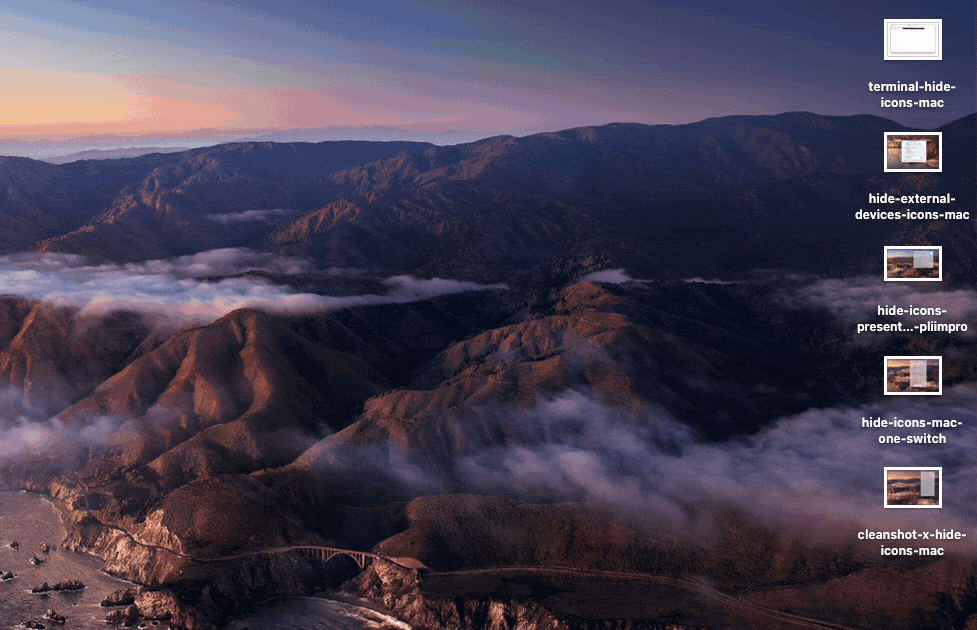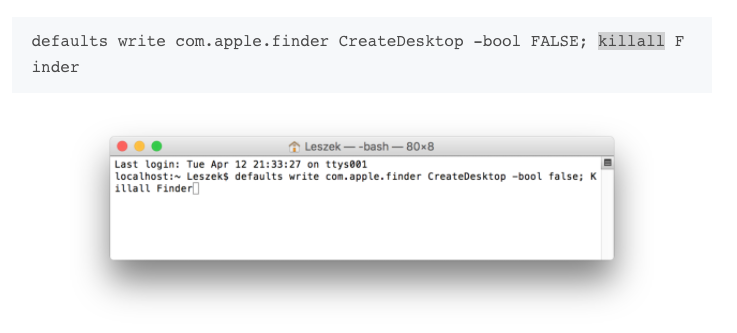
- #HOW TO HIDE MAC DESKTOP ICONS HOW TO#
- #HOW TO HIDE MAC DESKTOP ICONS INSTALL#
- #HOW TO HIDE MAC DESKTOP ICONS WINDOWS 10#
- #HOW TO HIDE MAC DESKTOP ICONS WINDOWS#
When you call the screen command, it creates a single window where you can work as normal.
#HOW TO HIDE MAC DESKTOP ICONS INSTALL#
Many programs you install will automatically add their own desktop icon, so you’ll be constantly deleting them.
#HOW TO HIDE MAC DESKTOP ICONS WINDOWS#
Simply put, screen is a full-screen window manager that multiplexes a physical terminal between several processes. If you like a clean desktop, Windows can be a little obnoxious. To detach it, type Ctrl-a Ctrl-d (most commands in screen start with Ctrl-a, this overrides the Ctrl-a command normally used when you want to jump to the start of a line). If you exit screen, by typing exit, you lose that session.
#HOW TO HIDE MAC DESKTOP ICONS WINDOWS 10#
One can do this by simply dragging the icon from Windows 10 desktop to another folder location. Another option is to move the icon to another location on your device. To begin with, you can hide the icon just by pressing the right-click button on your desktop, by selecting View and unchecking the Show desktop icons. Tip: You can switch between HKCU and HKLM in Windows 10 Registry Editor quickly.How do I hide desktop icons without deleting them? This can be done by clicking the Apple logo in the top left, then System Preferences.
#HOW TO HIDE MAC DESKTOP ICONS HOW TO#
Then, go to the following Registry key: HKEY_LOCAL_MACHINE\Software\Microsoft\Windows\CurrentVersion\Policies\ExplorerĬreate the same value here, NoDesktop as described above. How to hide and show System Preferences icons in macOS. To apply this option for all users, ensure that you are signed in as Administrator before proceeding. Later, you can delete the NoDesktop value to allow the user to use Desktop icons.

If you do not have such a key, then just create it. Tip: See how to jump to the desired Registry key with one click.

Enable the policy option Hide and disable all items on the desktop as shown below. Go to User Configuration\Administrative Templates\Desktop.


 0 kommentar(er)
0 kommentar(er)
